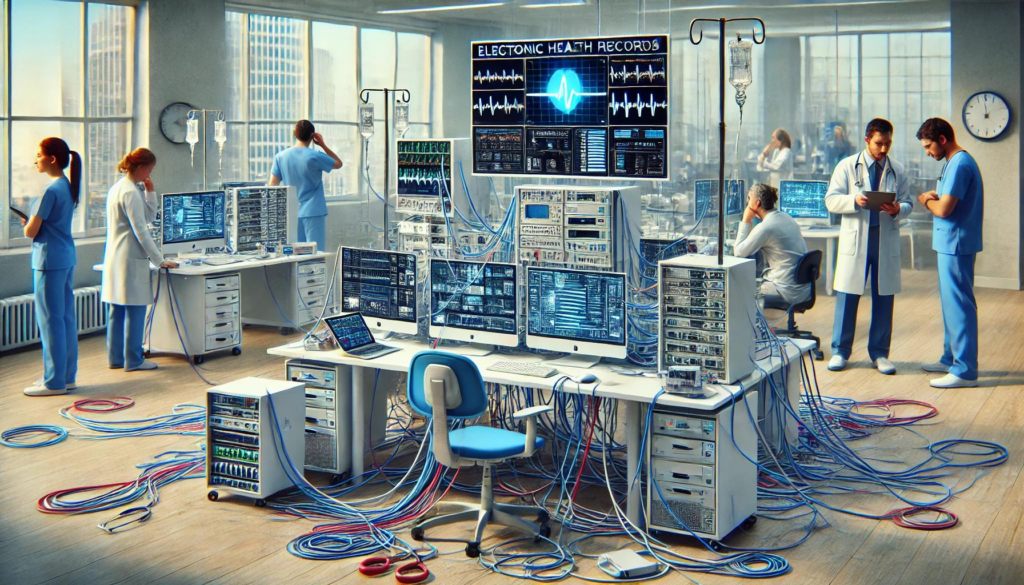
by Darin Brannan
Co-founder and CEO
ClearDATA
This is the fifth post in a series on Trends in Healthcare by Darin Brannan. See the first post on the trend toward consumerism in healthcare and the second post on healthcare mergers and acquisitions. The third post on securing healthcare IT startups is here and fourth post on strategic cost cutting in healthcare IT is here.
As we head into December, maybe you are like me and find yourself reading reports about trends, both reflective and predictive. This year, I’m more interested than ever, as 2020 has been tumultuous for both technology and healthcare, and frankly there’s a lot to think about and process as we continue 2021 planning and positioning.
I recently came across Forrester’s Predictions 2021 Report and found several aspects of it fascinating. Though not healthcare specific, many of the observations are very relevant to those of us leading healthcare organizations. Specifically, I’d like to share this comment from the opening of this smart report:
“Faced with the pandemic, firms did things that once seemed impossible – sometimes overnight. Under the relentless pressure of new customer realities, the future came into focus:
The value of your company depends on how customer-obsessed, resilient, creative and adaptive you are in jumping to the next growth curve in your industry.”
I can’t think of any industry where this rings truer than ours – Healthcare. We’ve all seen the rapid explosion of innovation, especially around virtual care. For those of us leading healthcare organizations, this is the year our rocket ships rattled as we tried to reach new heights at previously unthought of speeds. For some, the rocket rattled and began falling apart, while others were part of a wave of mergers and acquisitions or a flurry of IPOs.
For those of us who were able to pivot and take advantage of technologies like the broad agility of the cloud, it became a time to quickly assess and run forward to the market with new applications, new platforms, and a huge shift to SaaS and usage-based models, rather than more traditional enterprise software. For us at ClearDATA, that was evidenced by the many ways our customers can now engage with ClearDATA Comply™ ranging from simple evaluation mode, to fixed and usage SaaS, with modular dashboards, automated remediation, automated safeguards – mapping of technical controls to HIPAA and other regulations, supplemented by services as needed, extended BAA liability protection and even project-based professional advisory services. This definitely has been the year to ramp up our advisory services as no one has time to research all they need to know to adjust to this new paradigm – they now must rely on outside experts to keep up the pace to meet customer needs as part of the requirements of further ramping up their customer obsession.
The long trend toward consumerism that started 10-15 years ago with banking and retail apps has become the voice of patients and health plan members driving demand as they want their healthcare in their hands, on their mobile devices, and translating through their fitness apps and equipment. So, the race for remote IoT came running out from the quieter corners where app builders thought they had longer timelines for development and production. And with it came huge, complex new needs for security, privacy and compliance.
Then there is the universal budget whiplash as everyone in healthcare had to shift resources to battle the pandemic and work tirelessly to save lives. The effects of this were felt far beyond the front lines across healthcare IT. And for many of us, all of this had to be accomplished as we sent our workers home to plug their laptops into kitchen counters while we try to invent a new remote culture that keeps our talent engaged and excited about working to solve our collective challenges.
So, where Forrester equates the value of our companies to our ability to demonstrate customer-obsession, resilience, creativity and adaptability while we jump to our next growth curve, I say yes…we know. We are sprinting through this growth curve as fast as we can as we ready ourselves to leap into the next.
Which all brings me to this – there is no New Normal. We will never see ‘normal’ again. Henry Ford’s introduction of the Model T as a means of mechanized, personalized automobile travel created an industry that remained in constant flux from that point forward, as witnessed by our adoption of hybrid and electric cars, and now a leap toward self-driving and flying vehicles. It’s a long way from horses and will never return to that steady pace of transport that held for centuries. Likewise, healthcare will never return to physicians relying mostly on in-person visits and on only their cognitive abilities to deliver healthcare, nor healthcare IT departments relying on keeping healthcare data inside the safety of their data center’s four walls.
Here are a few other predictions from the report that also indicate that while we have a new landscape, it has not stopped momentum to arrive at a new normal.
- 30% of firms will increase spend on cloud, security and risk, networks and mobility
- Remote work will rise to 300% of pre-COVID levels
- 33% of data breaches will be caused by insider incidents, up from 25% today
And…
- The cloud takes center stage in pandemic recovery with an infrastructure Forrester predicts will grow 35% in 2021 to $120 billion.
There is no return to what was. The workplace environment is forever changed. As leaders of our organizations, we have to quickly figure out how to reinvent our corporate cultures. As doctors and physicians, like much of my extended family, the struggle is to completely reinvent how patient care is delivered.
The need for privacy, security and compliance in the healthcare cloud is increasing, not decreasing, and we have to apply this to new technologies like Infrastructure as Code, AI and machine learning, as well as new processes like Continuous Integration/Continuous Deployment.
How we even conduct business together has changed forever, from flights to meet in person in conference rooms to now gathered in video chats and distributed messaging.
We are now on the irreversible path of rapid transformation and innovation. And while that is dizzying and exhausting at times, it’s also a very good thing. Because, if we get it right, it will make us smarter, healthier, and more balanced so we can live longer, happier lives.

